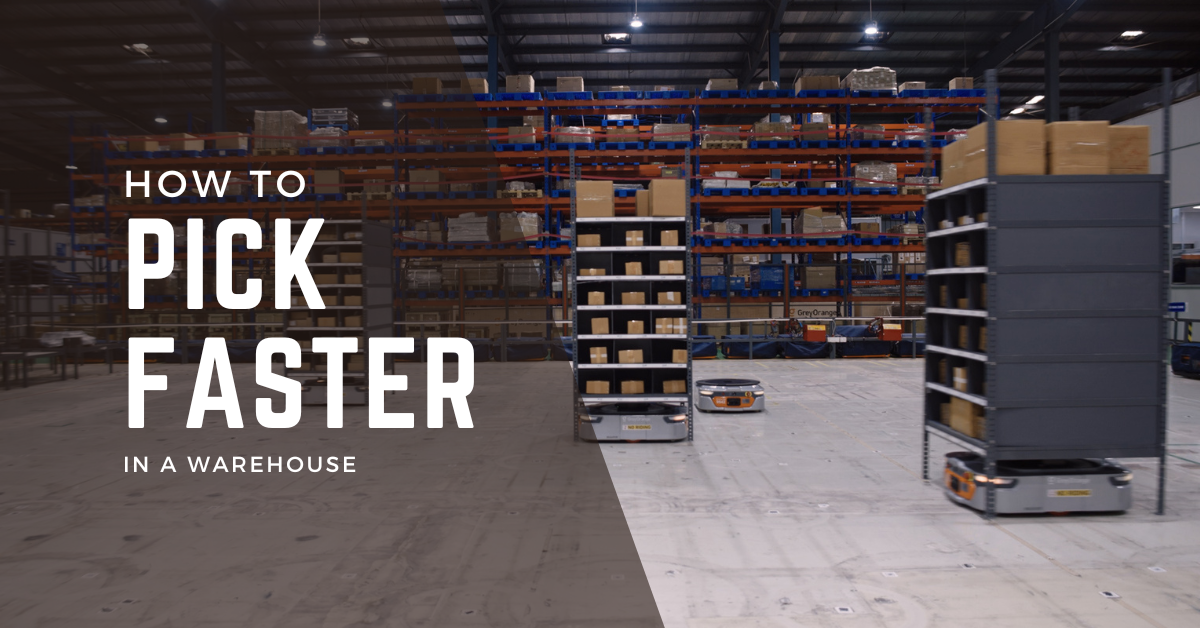


The process of picking and packing deliveries takes most fulfillment operations an average of four to eight hours. Best-in-class retailers are doing it in two. The difference in those two time frames is staggering. Even more so when you consider that almost half of consumers will shop elsewhere when delivery times are too long.
As a key factor in the speed equation, picking improvements can help retailers take the leap from average to best-in-class. By taking an approach that combines organization, training and automation, companies have transformed their current picking practices into efficient processes that enable greater speed and accuracy.
By optimizing the layout and storage of products, companies can ensure that items are readily available for fast, efficient picking. Start this process by analyzing the inventory. Which items are frequently ordered together? Does it make sense to group products by category or by popularity? And are certain items more popular on certain days or at specific times? Answering these questions will help you group products in a way that minimizes travel time and makes it easier for pickers to access them.
Storage space is another area where optimization can improve picking speed. The overall layout should maximize space utilization, to enable the storage of more items in less space. This may involve deploying vertical storage solutions, such as pallet racking, to improve workflow and open up forklift routes.
RELATED RESOURCE: 3 Questions to Evaluate Warehouse Automation Needs for Vertical Space Utilization
Clear labeling and signage for each section of the warehouse will also help pickers easily locate the items they need. Using color-coding or numbering systems reduces location confusion, accelerates picking and can increase order accuracy rates.
Route optimization is another important aspect of organizing the warehouse for faster picking. By planning the most efficient picking route, you can cut fulfillment time and reduce the distance pickers need to travel. A warehouse layout analysis can pinpoint the best path based on product locations, warehouse size and traffic flow.
A warehouse execution system (WES) with orchestration capabilities can help optimize picking routes. It generates the most efficient picking paths based on real-time data on inventory, order volume and product locations.
For warehouses that use automation systems or robots, an orchestration platform can take route optimization a step further. Warehouse orchestration reacts to human, bot or situational changes in real time.
From barcode scanners and RFID technology to conveyor belts and autonomous mobile robots (AMRs), there is no shortage of technologies and automation solutions available to help speed up the picking process.
To maximize picking speed and accuracy while alleviating labor challenges, warehouses should choose the technology that best fits their warehouse environment. For many companies, this will entail utilizing robots and automation solutions from multiple vendors, all connected via a multiagent orchestration platform.
Once you have the organization, process flows and automation in place, it’s essential to introduce each element to the people who will be using it every day. Establish clear guidelines and expectations through training sessions and materials, daily meetings and performance metrics. Operator or picker training should cover safety procedures, proper lifting techniques, picking methods and KPIs, as well as how to use all automation equipment and software.
A recent MIT Sloan article examines a lack of training as one of the primary barriers to achieving positive sum automation. Replacing tedious and often physically taxing tasks with automation increases productivity, throughput and picking speed. It also makes warehouse positions more feasible for an aging workforce and more enticing to younger candidates.
Digital skills training or automation-related accreditation programs are essential for building a warehouse workforce that is capable of operating, configuring and repairing the robots and systems that enable faster fulfillment. When workers understand how the tools operate and see the career related value of gaining new digital skills, they realize that the bots are not taking over and can work in tandem with them to achieve more productive picking.
Implementing strategies to improve warehouse picking speed can have a significant impact on productivity, accuracy and efficiency. As market conditions change, technology advances and customer preferences evolve, it’s helpful to regularly evaluate your picking process and automation. Then you can make any necessary adjustments to ensure warehouse processes are always optimized for efficiency — and orchestrated for maximum picking speed.